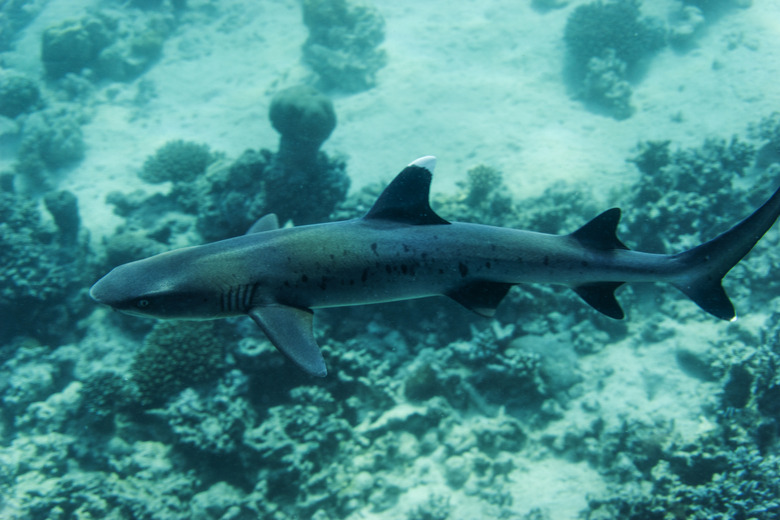What Is A Primary Consumer?
Food chains are divided into producers, who are self-sufficient in that they can produce their own food, and consumers, who eat producers or other consumers. Producers are mainly plants that use light, water and carbon dioxide to make starch, sugars and other carbohydrates. Because consumers can't produce their own food, they have to rely on plant producers for the food they need to survive. Primary consumers operate one level up from plants and eat only plants. Secondary consumers eat primary consumers, although they may eat plants as well. Higher-level consumers are mainly meat eaters, but they may eat any of the lower-level food sources. The chain of consumption from producer through the levels of consumers is a food chain.
TL;DR (Too Long; Didn't Read)
Primary consumers are those members of a food chain that eat producers or plants. Secondary and higher consumers may eat primary consumers as well as plants or lower-level consumers. A food chain has at least three elements: a producer, a primary consumer and a secondary consumer. An example of a marine food chain is algae as producer plants, small crustaceans as primary consumers and whales as secondary consumers. An example of a land-based food chain is grass as the producer plant, antelopes as primary consumers and lions as secondary consumers.
Food Chain Examples
Food Chain Examples
Food chains have at least three members: the producer, the primary consumer and the secondary consumer. In a simple food chain, the primary producer is a plant, the primary consumer is a herbivore that eats the plant and the secondary consumer is a carnivore that eats the primary producer.
An example of a simple marine food chain puts algae at the bottom as the producer. Algae are plants that use sea water, sunlight and carbon dioxide from the atmosphere to produce carbohydrates. Small crustaceans such as krill eat the algae and are the primary consumer. When there are lots of algae in the sea water, the concentration of krill can be quite high. Whales use the high concentration of krill as their food source, taking in huge mouthfuls of sea water and filtering it through the sides of their jaws to eat the krill. The whales are the secondary consumers.
A land-based simple food chain is made up of grass, antelopes and lions. Grass produces the carbohydrates that antelopes, the primary consumers, need to survive. Antelopes are food for the secondary consumers, the lions. Food chains can be more elaborate such as grass, insects, birds and hawks, but they always have a producer and a primary consumer.
The Desert Food Web Example
The Desert Food Web Example
While simple food chains are easy to understand, nature tends to be more complicated, and real interactions between producers and consumers are more complex. Simple food chains are not always accurate, and food webs give a better picture of how producers and consumers interact. For example, a desert has only a few producers and consumers, so the desert food chains are an ideal example of how food webs are a more accurate description.
In a desert food web, mice might eat a variety of seeds from plants, including seed-producing shrubs and grasses. The plants are the producers, and the mice are the primary consumers. The mice might be food for snakes and for owls acting as secondary consumers. The snakes themselves may be food for hawks as tertiary consumers, but hawks might also eat the mice. The result is a web of interactions rather than a linear chain, but the producers, primary consumers and higher-level consumers retain their roles.
Cite This Article
MLA
Markgraf, Bert. "What Is A Primary Consumer?" sciencing.com, https://www.sciencing.com/primary-consumer-6185943/. 22 November 2019.
APA
Markgraf, Bert. (2019, November 22). What Is A Primary Consumer?. sciencing.com. Retrieved from https://www.sciencing.com/primary-consumer-6185943/
Chicago
Markgraf, Bert. What Is A Primary Consumer? last modified March 24, 2022. https://www.sciencing.com/primary-consumer-6185943/
